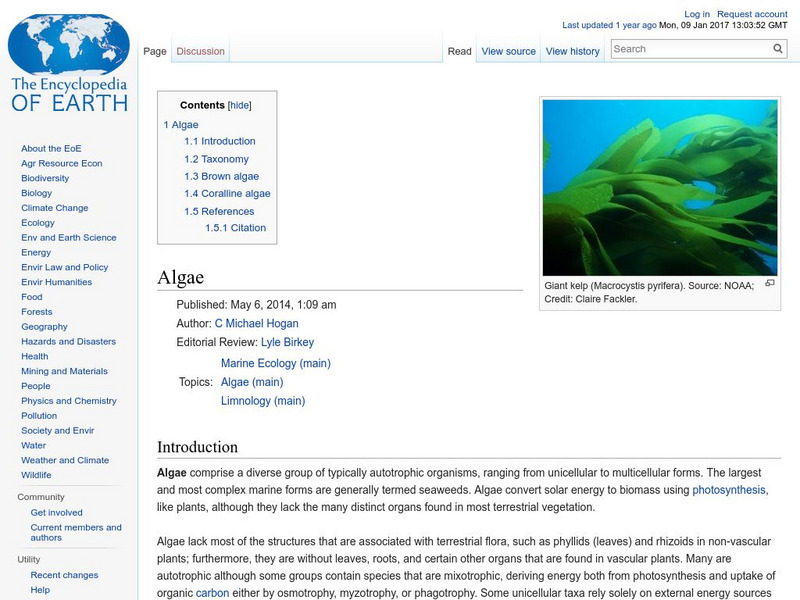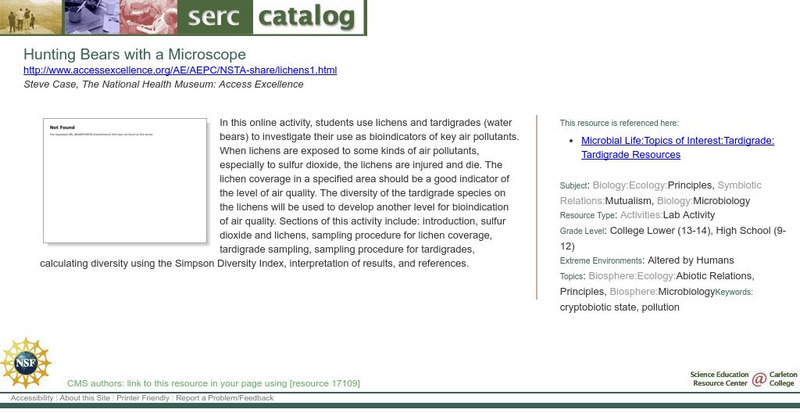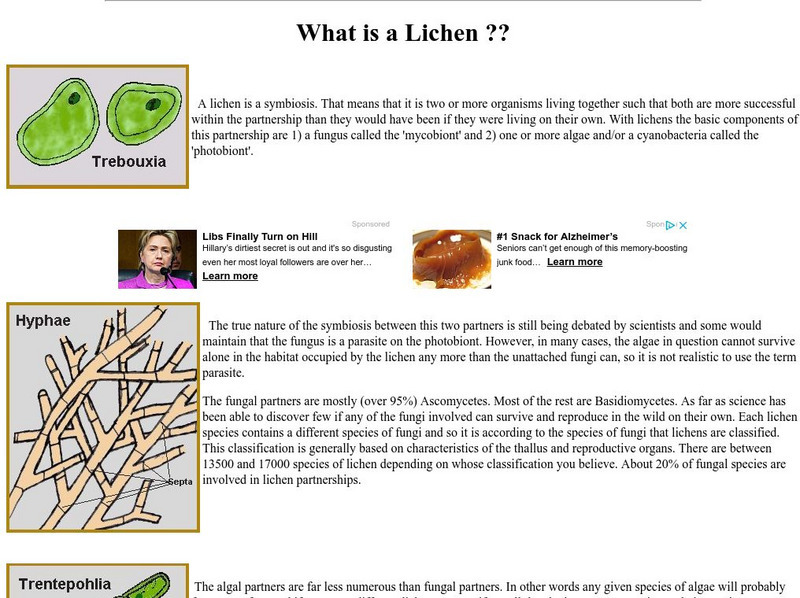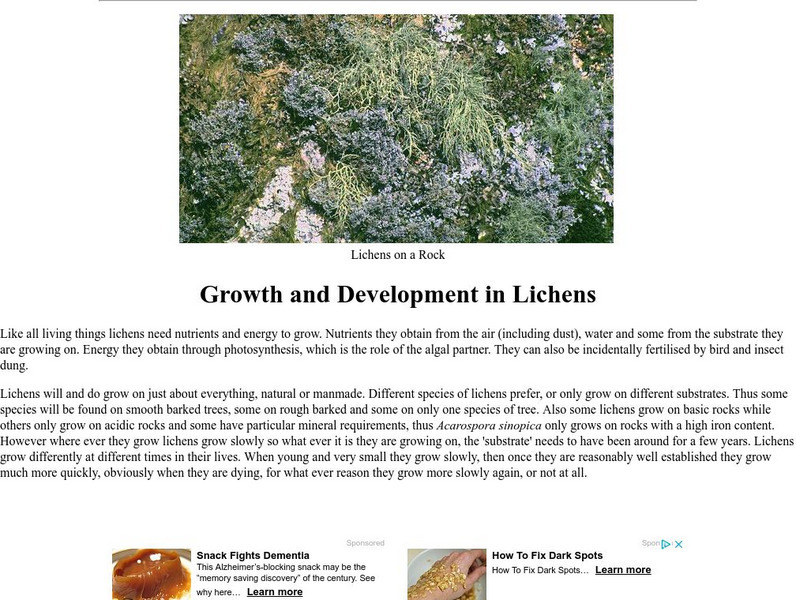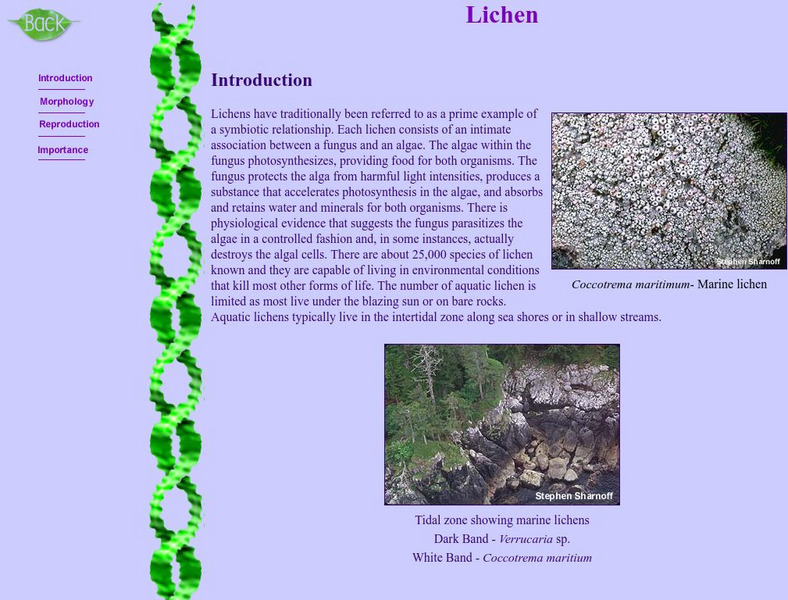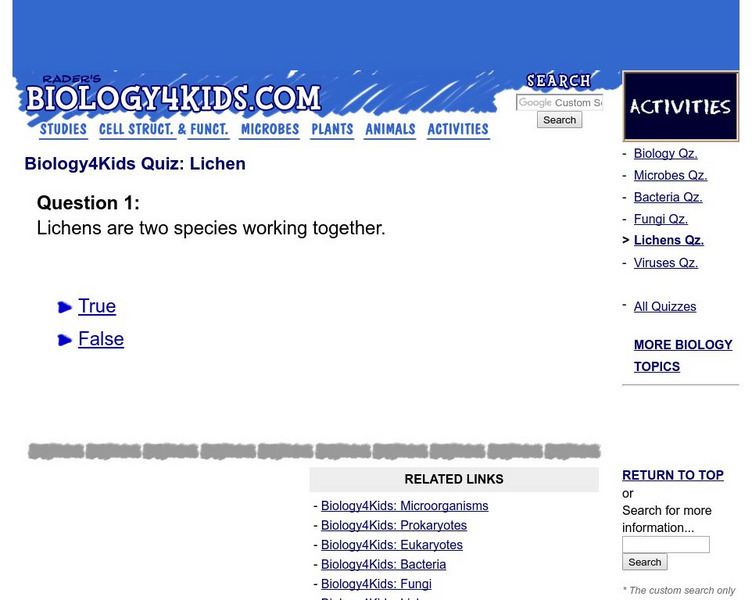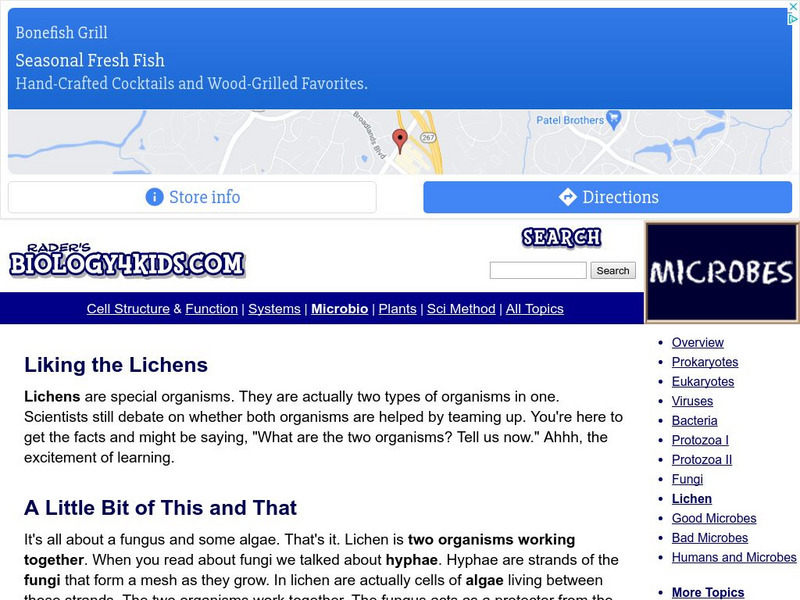Curated OER
Fungi Concept Map
In this fungi lesson students complete a web of the different characteristics of fungi using the vocabulary that are given on the page.
Curated OER
Kingdom Fungi
In this fungi worksheet, students answer 24 questions about the fungi kingdom including the structures in fungi, the characteristics of fungi and how they reproduce.
Curated OER
Kingdom Fungi
For this kingdom fungi worksheet, students write the name of the fungi division that is identified with each diagram. Then they describe why saprophytes are good for the environment and in what conditions fungi grows best. Students also...
Curated OER
Biology 11 Word Search
In this biology worksheet, students locate and identify various vocabulary terms related to biology. There are twelve words located in the puzzle to find.
Curated OER
BJU Life Science 11
In this biology worksheet, learners locate and identify various vocabulary terms related to the life sciences. There are ten words located in the puzzle.
Curated OER
Fun With Fungi
For this biology worksheet, 9th graders identify and locate various vocabulary terms pertaining to fungi. There are 18 biology terms located in the word search.
Science Buddies
Science Buddies: Lichenometry: An Accessible Method for Dating Recent History
Geology and archeology are examples of historical sciences. Their practitioners rely on multiple methods for establishing dates and temporal sequences as they seek to construct a history from the available evidence. This project will...
Missouri Botanical Garden
Missouri Botanical Garden: Tundra Plants
Visitors of this site will discover what plant life is found in the tundra and how they are able to survive the adverse weather conditions. Click on the yellow flower to start.
Encyclopedia of Earth
Encyclopedia of Earth: Ecology: Lichen
Article describing the different categories of lichens, their physical features, how they reproduce, their evolution, and important benefits lichens provide to humans. (Published: July 19, 2010)
Encyclopedia of Earth
Encyclopedia of Earth: Algae
A collection of articles and news items on algae: what they are, different kinds, harmful effects of some (e.g., red tide), potential benefits (e.g., as a replacement for fossil fuels), their role in ecosystems, etc.
Utah State University
Utah State University: Lichens
A great report on the the structure, function and general natural history of lichens.
Natural History Museum
Natural History Museum: Lichens
This expansive guide to lichens offerings many helpful resources. After a lengthy introduction complete with picture examples, this site offers a lichen guide to lichens on twigs.
Science Education Resource Center at Carleton College
Serc: Hunting Bears With a Microscope
In this study, students will use lichens and tardigrades (water bears) to investigate their use as bioindicators of key air pollutants.
Missouri Botanical Garden
Missouri Botanical Garden: Tundra Animals
Explore this comprehensive resource on the birds and mammals of the tundra. This resource features information such as diet, class, order, size, habitat, conservation range and the like.
Earth Life
Earth Life Web: What Is a Lichen?
A Lichen is made up of two parts: a fungus and an algae or cyanobacteria. To find out more read about their morphology and who benefits from this symbiotic relationship.
Earth Life
Earth Life Web: Growth and Development in Lichens
This site is provided for by Earth-Life Web Productions. Capable of living in some of the most difficult environments, lichens are often the first organisms to be found in an area. This website explains lichen growth and development.
Earth Life
Earth Life Web: Lichen Reproduction
This site is provided for by Earth-Life Web. Lichens have two types of reproductive bodies, spore-forming bodies, and vegitative reproductive bodies. This website discusses lichen reproduction and includes detailed illustrations.
University of Guelph
Canada's Aquatic Environment: Lichens
Find out the exact definition for a lichen when you explore this resource. Examine the morphology, reproduction and importance of Lichen through the content of this resource.
Biology 4 kids
Biology4 Kids: Quiz: Lichens
Take this ten-question review quiz over the hybrid organism, lichen. Read more about each question after an incorrect answer is given.
Curated OER
National Park Service: Arches National Park: Plants
Information about the cacti, grasses, lichens, trees, shrubs, and wildflowers that grow in Arches National Park, located in Moab, Utah. Focus is placed on the adaptations of these plants that allow survival in a desert habitat.
Earth Life
Earth Life Web: Loveable Lichens
At this site from Earth-Life Web you can learn about lichens including how they grow and reproduce. Colorful photos and a list of resources are included.
Other
42 Explore: Trees and Forests
This is a site with links covering multiple areas of tree and plant study. Great illustrations and information.
Biology 4 kids
Biology4 Kids: We're Likin' the Lichen
Lichen is made up of two organisms. Find out what those two are and how being a combination helps them to survive.
American Geosciences Institute
American Geosciences Institute: What Are the Biological Processes of Weathering?
Learn about biological factors in the weathering and breakdown of rocks.











